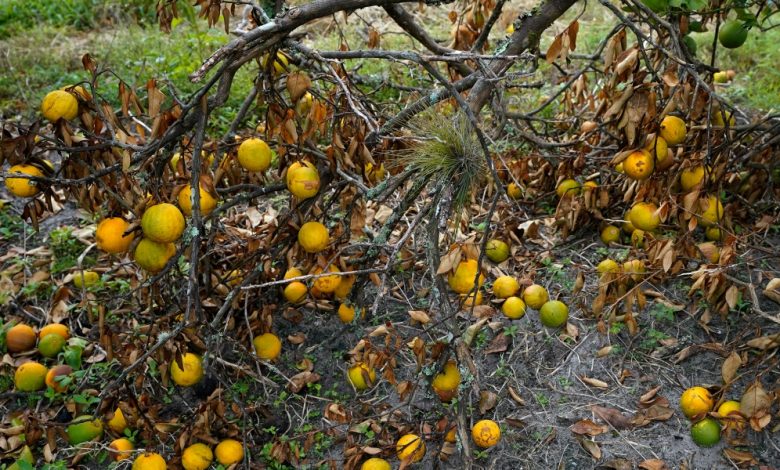Hurricanes decimate 36% of Florida’s orange crop

Orange production in Florida this season is expected to fall 36% from previous estimates, due in part to two hurricanes that battered the growing regions, according to figures released by the US Department of Agriculture on Friday.
The latest forecast calls for about 18 million cases of oranges to be produced in the state in 2022-23, compared to agency estimates of 28 million in October, which did not take into account damage caused by Hurricanes Ian and Nicole.
The latest figures show a 56% drop in Florida orange production compared to last season, agriculture officials said. The cartons generally weigh about 40 kilograms.
Other citrus fruits are also forecast to decline, with grapefruit production down 200,000 boxes than estimated in October and 100,000 fewer boxes producing mandarins and tangelos.
The drop in orange production would make the 2022-23 season one of the lowest since World War II. The harvest was 41 million boxes in 2021-2022 and more than 67 million in the previous season.
“It’s a gut punch. There’s no doubt about it,” said Matt Joyner, CEO of trade association Florida Citrus Mutual.
Florida Agriculture Commissioner Nikki Fried said Hurricane Ian damaged about 375,000 acres (152,000 hectares) of commercial citrus as it swept across the state in late September. While Nicole did far less damage, it hit some of the same areas in November
For consumers, this already means higher prices for orange juice, the main product made from Florida oranges. The US Bureau of Labor Statistics reports that juice and soft drink prices will be over 57% higher in 2022 compared to 1997.
And it means food companies will likely need to increase imports of oranges from countries like Brazil and Turkey. California’s orange production for 2022-23 is expected to exceed 47 million cases, far exceeding Florida’s expected total.
In Florida, total agricultural losses from Hurricane Ian have been estimated at at least $1.56 billion, according to the University of Florida. Overall, the Category 4 hurricane, including livestock, vegetables and other agricultural interests, affected about 5 million acres (2 million hectares) in the state.
Before the storm, it was already forecast that Florida citrus production would fall by a third from a year ago, in part due to winter freezes and ongoing disease problems. Growers say the hurricanes are another obstacle to overcome.
“If you eat, you’re part of farming,” said Roy Petteway, a fifth-generation Floridian, during a recent tour of his groves. “We expected a very good harvest this year. Unfortunately there is nothing we can do about it. It’s just a devastating thing.”
Our new weekly Impact Report newsletter explores how ESG news and trends are shaping the roles and responsibilities of today’s leaders. Subscribe here.



